- Port Overview
- Port Picture
- Description and Contacts of Key Companies
- Port Performance
- Discharge Rates and Terminal Handling Charges
- Berthing Specifications
- General Cargo Handling Berths
- Port Handling Equipment
- Container Facilities
- Customs Guidance
- Terminal Information
- Stevedoring
- Hinterland Information
- Port Security
Port Overview
The Container Terminal (LM17) is located at Kandal Leu Village, Banteay Dek Commune, Kien Svay District, Kandal Province. It is situated along the Lower Mekong River, 30 km from the capital city and Phnom Penh Old port. The Mekong River is the main river flowing from Laos, through Phnom Penh in Cambodia then Vietnam, ending in the China Sea. The port is approximately 318 km from the mouth of the Mekong in Vietnam and 130 km in Cambodian territory.
The ASEAN agreement allows cargo ships free passage through Vietnam. Ships of 3,000 MT capacity can move from the China Sea upriver to Phnom Penh. To transport from Phnom Penh north onto the Mekong and to the Tonle Sap, barges ranging from 150-500 MT capacity can be used. During the dry season, draft can be 4.5 m and increase during the rainy season to 5.5 m.
The Port consists of two berths for both loading and unloading operations. With a river width of about 500 meters, it guarantees full safety all around the year. Quay No 1(300m x 22m) can accommodate four or five ships for berthing at each time; the new Quay No 2. (149m x 22m) was built next to the existing one. The floating jetty No 2 consists of two steel pontoons (45m x 15m) with two lines of conveyor belts installed on steel bridges. There are 4 TCCs, 2 FCCs and 2 floating cranes currently operating with all types of cargo. The 4th TCC was installed and started operating by the end of Aug 2020 while another 2 FCCs were installed at the new quay and launched on 20th Sep. 2021.
For information on Cambodia Port of Phnom Penh, please see the following links: Cambodia Port of Phnom Penh Website
Additional port information for Cambodia can also be found at: Maritime Database - Cambodia Port Information
|
Port Location and Contact |
|
|---|---|
|
Country |
Cambodia |
|
Province or District |
Kandal Leu Village, Banteay Dek Commune, Kien Svay District, Kandal Province |
|
Nearest Town or City with Distance from Port |
Phnom Penh (30 km) |
|
Port's Complete Name |
Container Terminal (LM17) |
|
Latitude |
11.47322222 |
|
Longitude |
105.14722222 |
|
Managing Company or Port Authority |
Port Authority |
|
Management Contact Person |
Mr. Hun Sokhalay, Head of Planning/Marketing Department 010 444 358 |
|
Nearest Airport and Airlines with Frequent International Arrivals/Departures |
Airport Name: Phnom Penh International Airport Airlines: n/a |
Port Picture
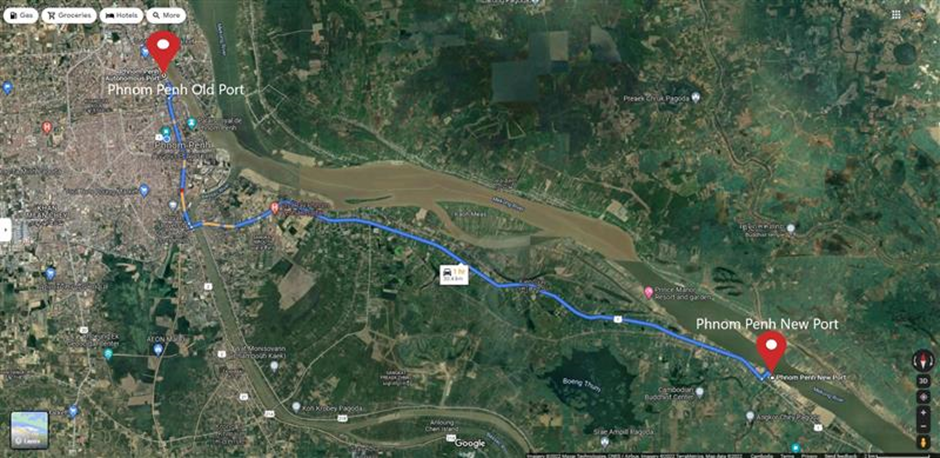
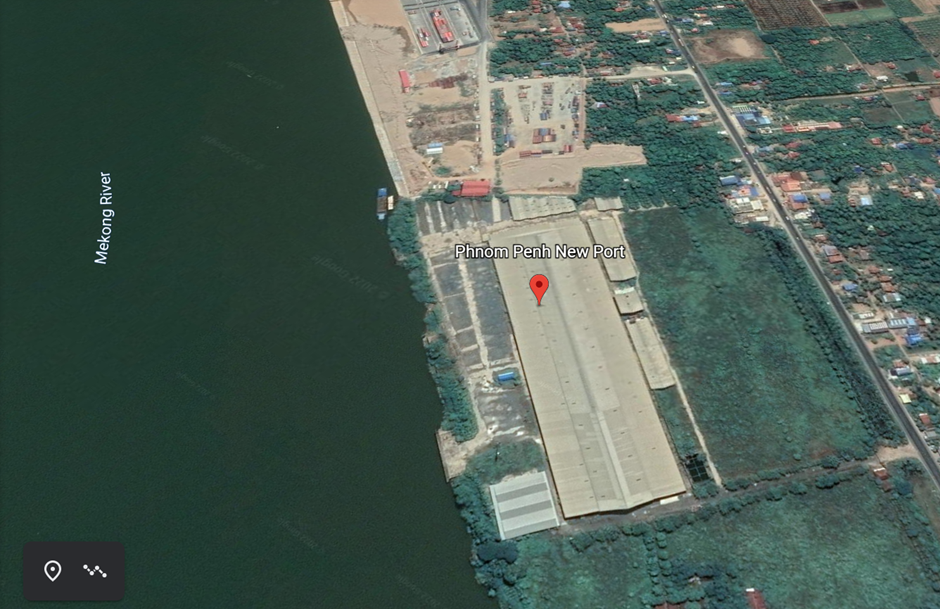
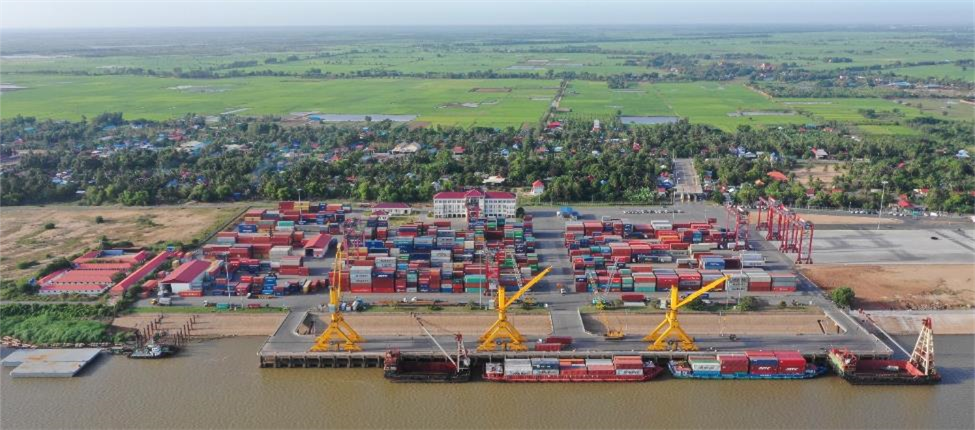
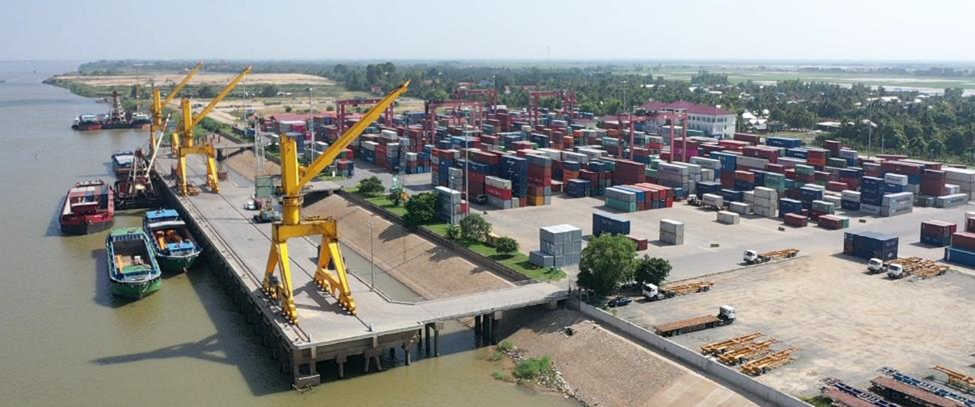


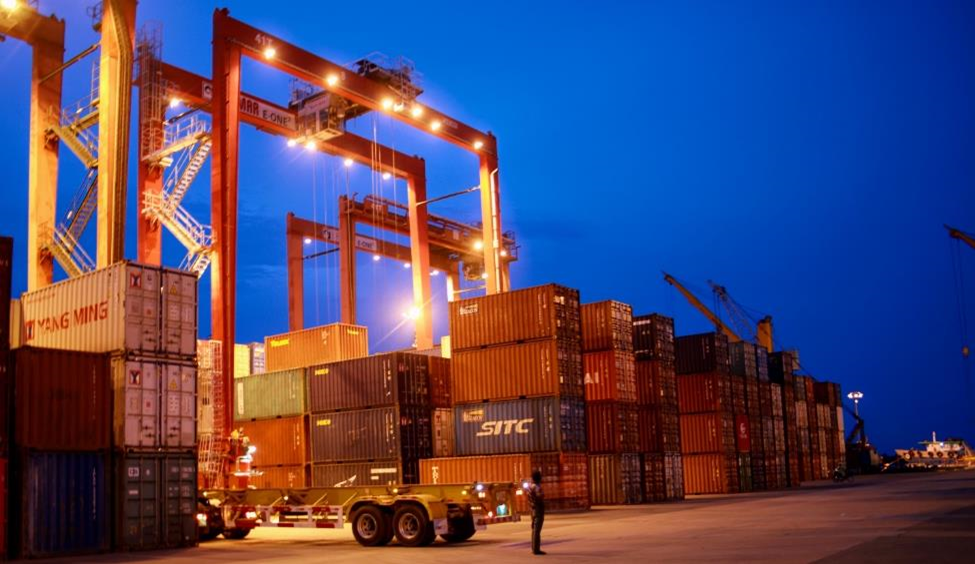

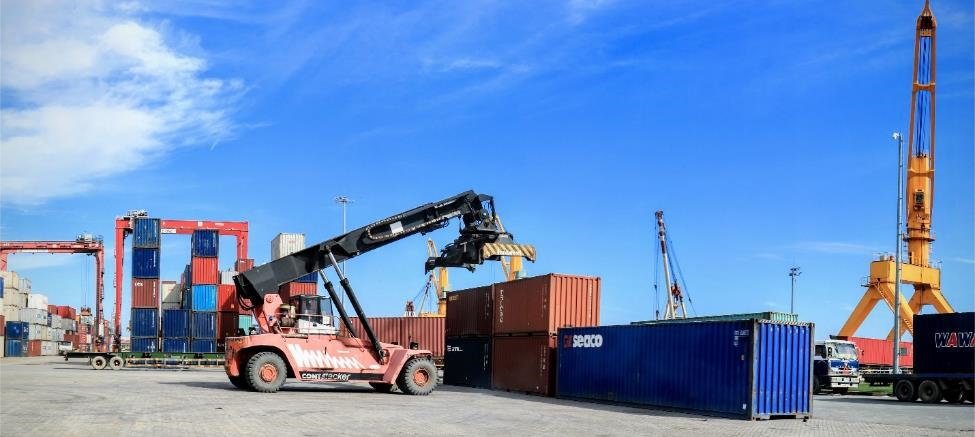
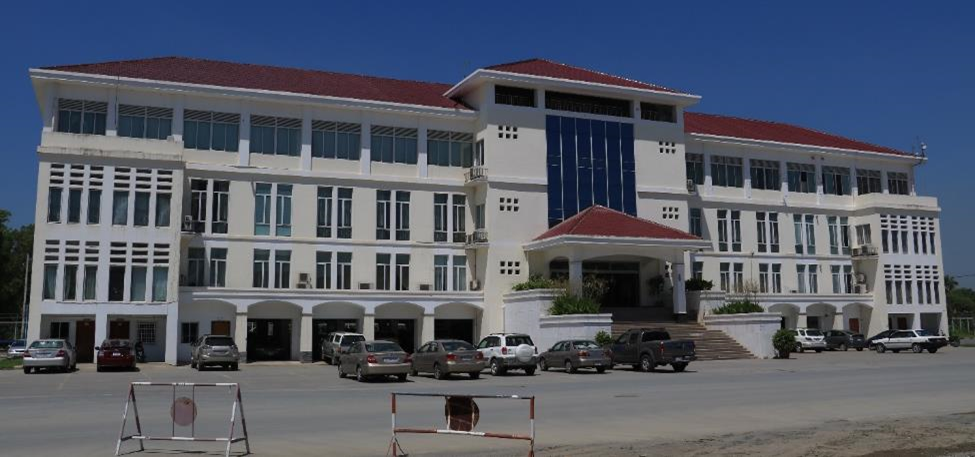
Description and Contacts of Key Companies
Phnom Penh Autonomous Ports (Old Port and New Terminal) are international ports, which are under the supervision of the Ministry of Public Works and Transport and the Ministry of Economic and Finance. Cargo movement in/out port under standard formalities is controlled by Port authority, General Department of Customs & Excise and Border Police.
For information on Port of Phnom Penh contact details, please see the following link: 4.4 Port and Waterways Companies Contact List.
Port Performance
The following information refers to the old and new port as reported by the Port Authority. Information on TEU are specific only to the new port.
Source: Cambodia Port of Phnom Penh Website
|
Seasonal Constraints |
||
|---|---|---|
|
Occurs |
Time Frame |
|
|
Rainy Season |
Yes |
From July to November |
|
Major Import Campaigns |
None |
|
|
Other Comments |
Water draft in Dry season is minimum: 5 m (the vessels with draft under 4.5 m can navigate during dry season. |
|
|
Handling Figures |
2018 |
2019 |
2020 |
2021 (Jan-Oct) |
|---|---|---|---|---|
|
Vessel Calls (Container Vessel) |
766 units |
948 units |
957 units |
864 units |
|
Container Traffic (TEUs) |
213,571 |
281,045 |
290,857 |
288,847 |
|
Handling Figures Bulk and Break Bulk for 2021 (by October) |
|
|---|---|
|
Bulk (MT) |
9,131.83 Tons |
|
Break bulk (MT) |
46,928.75 Tons |
|
Total Cargo Handling (Include: Container, Oil, General Cargo) |
3,226,419 Tons |
Discharge Rates and Terminal Handling Charges
For information on Cambodian ports of Phnom Penh rates and charges, please see the following link: Cambodia Port of Phnom Penh.
Average vessel turnaround time is 24hrs as per above the mentioned capacity of vessel.
Average tonnage of cargo handling: 150mt/day/gear to warehouse.
Average tonnage of cargo handling: 200mt/day/gear to truck.
Average container handling in working hours: 18 Boxes/1hr/crane and 30 Boxes /1hour/2cranes
Water: by tanker truck or by running water pipe with supplying capacity from 200-250T/day.
Food and Medicament: (Advanced order).
Ship repairs: Small dockyard, for minor repair only.
Berthing Specifications
|
Type of Berth |
Quantity |
Length (m) |
Maximum Draft (m) |
Comments |
|---|---|---|---|---|
|
Conventional Berth |
2 berths (1 berth for 1 vessel/barge) |
200 m |
4.5 m-5.5 m |
25m Terminal use for general cargo (steel bar, steel coil, concrete pile, concrete round drain pipe, plywood, etc) |
|
Container Berth |
Quay 1: 5 vessels at the same time |
300 m |
4.5 m-5.5 m |
Used by conventional container, berthing tugs, mooring boat, speed boats. |
| Quay 2: 2 vessels at the same time | 149 m | 4.5 m-5.5 m | ||
|
Silo Berth |
No |
|
||
|
Berthing Tugs |
1 |
|
||
|
Pilot Boats |
1 |
|
|
|
|
Speed Boats |
1 |
|
|
|
|
Water Barges |
No |
|
General Cargo Handling Berths
|
Cargo Type |
Berth Identification |
|---|---|
|
Imports - Bagged Cargo |
N/A |
|
Exports - Bagged Cargo |
N/A |
|
Imports and Exports - RoRo |
N/A |
|
Other Imports |
N/A |
Port Handling Equipment
The port equipment is managed by the semi-autonomous port authority.
|
Equipment |
Available |
Total Quantity and Capacity Available |
Comments on Current Condition and Actual Usage |
|---|---|---|---|
|
Dockside Crane |
Yes |
|
Used for container and break bulk cargo (stevedoring) |
|
Container Gantries |
Yes |
12 RTGs (Capacity 40T) |
Using for container only (LOLO at yard) |
|
Mobile Cranes (Crawler Crane) |
Yes |
|
used for general cargo and container |
|
Reach-stacker |
Yes |
5 |
Used for container and bulk cargo |
|
Sky |
Yes |
3 |
Used for empty containers |
|
RoRo Tug-master (with Trailer) |
No |
||
|
Grain Elevator with Bagging Machines |
No |
||
|
Transtainer |
No |
||
|
Forklifts |
Yes |
4 Units (6T to 25T) |
Used for empty container and stuff/unstuff the cargo. |
|
Other equipment |
Yes |
|
|
Container Facilities
Container yard: 19,200 m2 with storage capacity up to 1,500 TEUs.
|
Facilities |
20 ft |
40 ft |
|---|---|---|
|
Container Facilities Available |
Yes |
Yes |
|
Container Freight Station (CFS) |
No |
No |
|
Refrigerated Container Stations |
Yes |
Yes |
|
Other Capacity Details |
256 Slots |
256 Slots |
|
Daily Take Off Capacity |
5 Containers / Hour |
5 Containers / Hour |
|
Number of Reefer Stations |
6 |
6 |
|
Emergency Take-off Capacity |
Max: 5 containers / hour |
Max: 5 containers / hour |
|
Off take Capacity of Gang Shift |
35 - 40 Containers |
35 - 40 Containers |
Customs Guidance
Cargo movement in/out port is under standard formalities controlled by Port authorities, Customs authorities and Border Police. There are two procedures of customs clearance in Cambodia:
- Customs Pre- clearance (speedy procedure - 5 business days)
- Customs Clearance (regular procedure - 25 business days)
For more information on customs in Cambodia, please see the following link: 1.3 Customs Information.
Terminal Information
Multipurpose Terminal
Phnom Penh Autonomous Port Authority (PPAP) has been using Terminal LM17 as the main terminal for container cargoes. The Container Terminal LM17 has a total capacity of 400,000 TEUs per year.
Grain and Bulk Handling
PPAP has one 100 T crane on a Pontoon and some mobile cranes with two jetties at Terminal 25M which can handle general cargo such as steel bars, steel coils, concrete piles, concrete round drains pipes, plywood, etc. It is located to the south of the Container Terminal LM17.
Main Storage Terminal
PPAP has a plan to develop two warehouses which locate near to the Container Terminal LM17. The first warehouse is for LCL cargo with the size of approximately 26m x 60m, located at the south of Container Terminal LM17. The second warehouse is for general cargo with the size of approximately 30 m x 50 m, located at the north of Container Terminal LM17.
Stevedoring
Weight cargo to be implemented according to the cargo description (Bill of Lading) or (Manifest) by computing both net weight and gross weight or empty container.
- Import (stevedore in): PPAP charges for discharging the cargo from ship to truck on wharf and deliver the truck to container yard (CY) then lift off the cargo from truck on the CY.
- Export (stevedore out): PPAP charges for lifting on the cargo to truck then truck will deliver the cargo to wharf and then the cargo will be loaded to ship.
Stevedoring charges of the last years can be found at: Stevedoring Charges
Hinterland Information
Cargo is transported from port to customers or vice versa by port owned or private trucks. Capacity is sufficient at present. The port is located along national highway No 1, facilitating the quick dispatch of the commodities.
Port Security
The perimeter of the port is fenced, there are two gates for Container Terminal LM17 and one gate for Terminal 25M. The security guard of the port is working daily 24/24 hours, 7 days a week. No significant security issues have been identified.
|
Security |
|
|---|---|
|
ISPS Compliant |
Yes |
|
Current ISPS Level |
Level 1 |
|
Police Boats |
No |
|
Fire Engines |
No |


